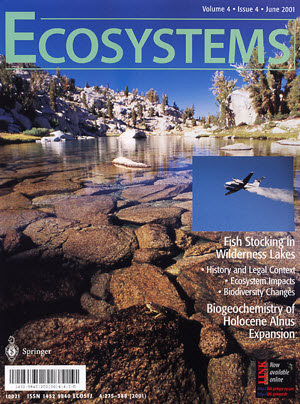The introduction of nonnative fish into wilderness lakes: good intentions, conflicting mandates, and unintended consequences
Abstract/Summary
Collectively, these papers indicate that the effects of widespread trout introductions into wilderness landscapes are not limited simply to direct effects on prey taxa, but instead can be transmitted throughout lake food webs and even beyond the shorelines of fish-containing lakes to fishless lakes. In addition, following fish removal, full recovery of ecosystem structure and function may not occur. These results pose a difficult challenge for fisheries and wilderness managers interested in better balancing the conflicting goals of maintaining nonnative fisheries in wilderness areas while also minimizing the effects of these fisheries on natural processes. If managers are to truly balance these often opposing goals, it is imperative that current fisheries management practices be evaluated in the context of their effects on ecosystem and landscape processes. It is our hope that this special feature will provide the impetus for such an evaluation and for the adoption of new management strategies to reduce the ecological impacts of nonnative fisheries in protected areas.
Publication details
| Published Date: | 2001 |
| Outlet/Publisher: | Ecosystems 4: 275–278 |
| Media Format: |
ARMI Organizational Units:
Rocky Mountains, Northern - BiologyTopics:
Invasive SpeciesManagement
Place Names:
Western USKeywords:
fishintroduced species
invasives
management

